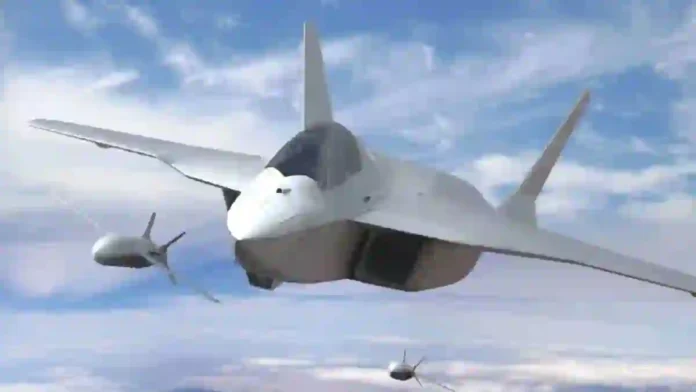India could stand to gain significantly from Europe’s next-generation fighter jet program, which is centred on integrating artificial intelligence, stealth technology, and advanced drone swarming capabilities. Defence experts argue that participation in this ambitious project would not only enhance India’s aerospace and defence capabilities but also provide strategic leverage at a time when global air combat systems are rapidly moving toward sixth-generation standards.
India And Europe’s 6th-Gen Fighter Project
Europe is currently working on two major sixth-generation fighter jet initiatives: the Future Combat Air System (FCAS) led by France, Germany, and Spain, and the Tempest program spearheaded by the UK, Italy, and Sweden.
Read- India Preparing To Conduct Crucial Test New-Generation Long-Range Subsonic Cruise Missile
Both projects are designed to create highly advanced fighters capable of operating seamlessly in networked battle environments alongside unmanned combat systems. Key features under development include AI-powered mission autonomy, deep stealth design, directed energy weapons, and drone swarm integration.
Defence analysts believe India’s potential entry into one of these projects could accelerate its indigenous fighter programs such as AMCA (Advanced Medium Combat Aircraft), which is still in the development stage.
AI, Drone Swarms, And Air Combat of The Future
Future warfare is expected to be dominated by man-unmanned teaming systems, where a single fighter jet will act as the hub for multiple drone swarms providing reconnaissance, strike, and electronic warfare support.
AI will be a core enabler, allowing the fighter jet pilot to process vast amounts of data in real-time, optimise mission planning, and command autonomous drones. For India—already pushing AI integration in its defence sector through DRDO and private startups—collaboration with European partners could significantly cut the technology development gap with the US and China. With China advancing its J-20 and J-35 stealth jets and experimenting with loyal wingman drones, India’s adoption of such capabilities is becoming an urgent necessity.
Read- Post-Op Sindoor, Proposal To Enhance IAF’s Combat Strength On Cards
Read- IAF Aiming At Much More Than 42 Fighter Aircraft Squadrons, Says Top Official
Benefits For India’s Defence And Industry
By joining the European sixth-generation fighter ecosystem, India could gain:
Access to high-grade aerospace R&D in stealth airframes, advanced turbofan engines, and AI-driven avionics.
Technology infusion for indigenous projects like AMCA, TEJAS MK-2, and upcoming unmanned combat aerial vehicle (UCAV) programs such as Ghatak.
Defence-industrial collaboration that would enhance joint production and open up new export opportunities.
Operational edge in the Indo-Pacific by countering Chinese air power modernization and Pakistan’s planned induction of the J-31/J-35 stealth platforms.
Strategic Leverage For India
Beyond the technological benefits, such a collaboration would deepen India’s defence ties with Europe, diversifying away from its traditional suppliers—Russia and the US. At a time when India’s procurement of 114 MRFA (Medium Role Fighter Aircraft) is still under deliberation, entry into a sixth-generation program could reset India’s future air combat roadmap. It would ensure not just fighter aircraft purchases but long-term participation in their design and evolution, thereby embedding India into a global supply chain.
India’s Preparedness And Hurdles
However, hurdles remain in terms of technology transfer negotiations, financial commitments, and strategic alignments. European nations may hesitate to share highly classified stealth and AI technologies without strong guarantees. India, on the other hand, must evaluate whether its own defence ecosystem—still developing critical technologies such as indigenous jet engines (Kaveri 2.0) and AESA radars—can effectively absorb and co-develop such advanced systems.
Based On News18 Report
Agencies




